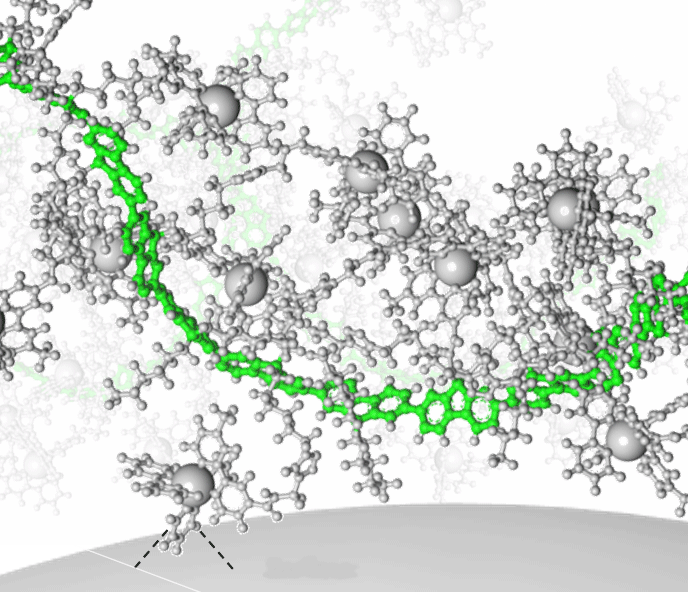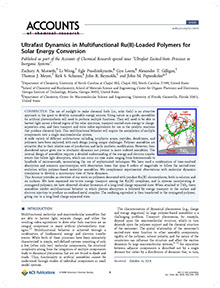Papanikolas Group
Ultrafast Spectroscopy and Ultrafast Microscopy
Papanikolas Group
Ultrafast Spectroscopy and Ultrafast Microscopy


Group Members



Overview
Multifunctional molecular assemblies that are able to harvest light, separate charge and utilize the resulting redox equivalents to drive solar fuels reactions are an integral component in many artificial photosynthetic strategies. We are using time-resolved spectroscopies (e.g. transient absorption, time resolved emission and femtosecond stimulated Raman spectroscopy) combined with computer simulation methods to characterize the fundamental energy and electron transfer steps in molecular assemblies. Our focus is on materials targeted for use in dye-sensitized photoelectosynthesis (DSPEC) cells, and these projects are carried out in participation with the UNC Energy Frontier Research Center (EFRC), involving collaborations with groups at UNC-CH, University of Florida, and Georgia Tech.
Research Directions

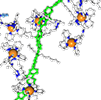 Light-Harvesting Molecular Assemblies
Light-Harvesting Molecular Assemblies
We are studying energy and electron transfer in muti-component assemblies that use a polymer or peptide scaffold to connect multiple chromophores to a single charge separation center and catalytic site.

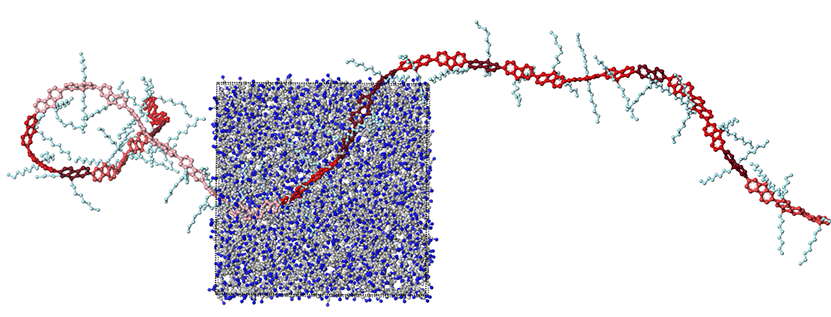
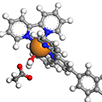 Charge Injection Dynamics
Charge Injection Dynamics
Excited state charge injection into the metal oxide electrode is the first step in the conversion of sunlight into solar fuels. Ultrafast spectroscopy is used to characterize electron injection into n-type metal oxides and hole injection into p-type materials.
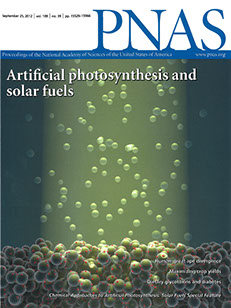
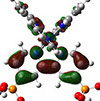 Chromophore-Catalyst Assemblies
Chromophore-Catalyst Assemblies
Electron transfer between from the water oxidation catalyst to the oxidized chromophore is a key step in the solar fuels process. We are using time-resolved methods to examine this critical step, as well as the others that participate in the catalytic process.
Molecular Dynamics Simulations
Computer simulations that model the excited state energy and electron transfer process in these mulit-component assemblies are integral to data interpretation. We are combining all-atom molecular dynamics methods with kinetic models to gain fundamental insight into the flow of charge and energy in these complex assemblies.
Experimental and Theoretical Methods
Femtosecond Stimulated Raman Spectroscopy
The complexity of the solar fuels catalytic processes has prompted us to develop ultrafast methods that can probe the excited state dynamics in new ways. Femtosecond stimulated Raman spectroscopy (FSRS) is a three-pulse method that enables the dynamics to be followed via changes in the vibrational modes, rather than electronic absorptions. We have recently demonstrated a frequency-modulated FSRS technique that exploits pulse shaping methods to eliminate the background FSRS spectra.
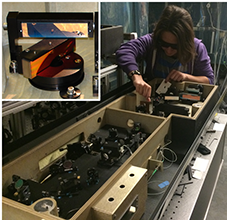
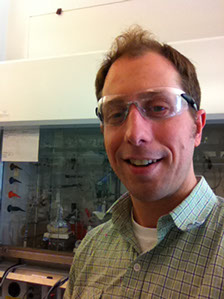
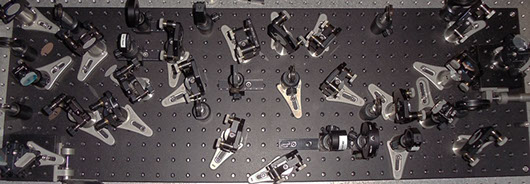
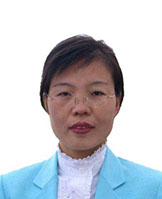
Time-Resolved Spectroscopy with Wide Dynamic Range
Broad-band transient absorption spectroscopy plays an integral role in our research. A key feature of our home-built spectrometer is its wide dynamic range, which enables us to follow dynamical phenomena over 9 decades of time, from 100s of femtoseconds to 100s of microseconds. With this spectrometer we are able to observe the fundamental energy and electron transfer events that take place within just a few picoseconds, as well as the charge recombination processes that occur over tens to hundreds of microseconds and compete with solar fuels generation.
Papanikolas Group
Department of Chemistry
University of North Carolina at Chapel Hill
